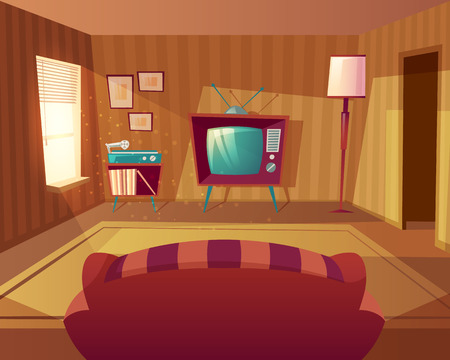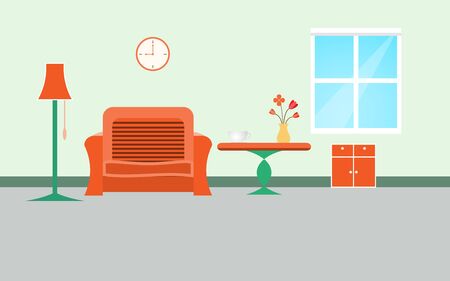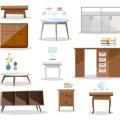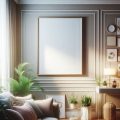Historical Context: The Victorian and Edwardian Eras
To appreciate the distinctive interior architecture of British homes from the Victorian and Edwardian eras, it is essential to understand the broader historical context that shaped these styles. The Victorian era (1837–1901), marked by Queen Victoria’s reign, was a period of immense transformation across British society. Rapid industrialisation brought about significant technological advancements, such as gas lighting, indoor plumbing, and mass-produced building materials. These innovations made their way into domestic interiors, allowing for greater comfort and convenience than ever before.
Meanwhile, social structures were in flux. The rise of a prosperous middle class fuelled demand for housing that could reflect newfound status and aspirations. Homes became more than mere shelters—they were statements of taste, respectability, and progress. The influence of the Empire also introduced exotic motifs and materials into British interiors, further diversifying aesthetic possibilities.
The subsequent Edwardian era (1901–1910) ushered in a spirit of optimism and refinement. While technological progress continued apace, there was a notable cultural shift towards lighter, airier spaces and a rejection of some of the heavier Victorian ornamentation. Innovations like electricity started to feature in homes, and architectural design began to embrace elements of both traditional English craftsmanship and influences from continental Europe.
Together, these periods set the stage for an extraordinary evolution in interior architecture—one shaped by industrial prowess, global connections, and shifting social ideals. The resulting blend of formality, comfort, and eclectic style continues to inform British domestic design sensibilities today.
2. Key Architectural Features
Victorian and Edwardian homes are celebrated for their distinctive interior architecture, which reflects the societal values and technological advancements of their respective eras. Examining these signature elements not only helps in identifying the period of a property but also provides inspiration for restoration or sympathetic renovation. Below, we explore some of the most defining architectural features found in British homes from these periods.
Ornate Mouldings and Cornicing
One of the most eye-catching aspects of Victorian and Edwardian interiors is the use of decorative mouldings and cornices. These embellishments were often used to signify status and taste, with intricate patterns such as egg-and-dart, acanthus leaves, and floral motifs gracing the junctions between walls and ceilings. While Victorian mouldings tend to be heavier and more elaborate, Edwardian designs generally lean towards restrained elegance with simpler profiles.
Skirting Boards
Skirting boards in these period homes were not merely functional but were designed as integral decorative elements. Victorian skirting boards are typically taller—often between 6 to 9 inches—and feature detailed profiles, whereas Edwardian skirtings are slightly shorter with cleaner lines reflecting the move towards simplicity.
| Feature | Victorian Style | Edwardian Style |
|---|---|---|
| Skirting Board Height | 6–9 inches (high) | 4–6 inches (medium) |
| Moulding Design | Elaborate, deep profiles | Simpler, less ornate |
| Cornicing Patterns | Complex and bold motifs | Subtle, geometric forms |
Fireplaces: The Focal Point
No period home is complete without its fireplace. In Victorian interiors, fireplaces were often cast iron with decorative tiled inserts, marble surrounds, and ornate mantels. The Edwardian era embraced lighter colours and finer detailing, sometimes incorporating Art Nouveau influences into hearth tiles or mantelpieces. Fireplaces served both functional and aesthetic roles, anchoring living spaces and providing a sense of grandeur.
Dramatic Staircases
The staircase was considered a statement feature in both Victorian and Edwardian architecture. Victorian staircases typically boast turned newel posts, carved balusters, and sweeping handrails—often crafted from dark-stained hardwoods like mahogany or oak. Edwardian staircases retain craftsmanship but introduce lighter woods and more open, airy designs, aligning with the era’s preference for light-filled interiors.
Quick Reference: Hallmark Interior Features Comparison
| Element | Victorian Homes | Edwardian Homes |
|---|---|---|
| Mouldings & Cornices | Highly decorative, heavy profiles | Simplified motifs, refined shapes |
| Fireplaces | Tiled cast iron with elaborate mantels | Lighter surrounds, Art Nouveau accents |
| Staircase Design | Sweeping curves, dark woodwork | Straighter lines, lighter timbers |
| Skirting Boards & Architraves | Tall and deeply profiled | Slightly lower, clean lines |
Summary Observation:
The interplay of ornate detailing and evolving tastes marks the transition from Victorian opulence to Edwardian refinement within British interior architecture. Recognising these features not only honours the heritage of your home but also guides any interventions to preserve its authentic character.

3. Room-By-Room Analysis
Drawing Rooms: The Heart of Social Grace
The drawing room, also known as the sitting room, was a focal point in both Victorian and Edwardian homes. Its primary function was for receiving and entertaining guests, reflecting the familys status and taste. Typical features included ornate plasterwork ceilings, intricate cornices, and grand fireplaces often adorned with decorative tiles or marble. Large bay windows allowed natural light to flood in, complemented by heavy drapes or lace curtains. Furnishings were plush, with buttoned-upholstery sofas and armchairs, while side tables and display cabinets showcased porcelain, silverware, or curios collected from travels.
Parlours: Spaces for Everyday Living
Unlike the formal drawing room, the parlour served as a more intimate family space for everyday use—reading, sewing, or informal gatherings. Victorian parlours were characterised by patterned wallpaper (often with floral or damask designs), dark wood panelling or dado rails, and sturdy furniture. Edwardian parlours saw lighter colour palettes and simpler lines but retained the emphasis on comfort. Fireplaces remained central features, sometimes framed by tiled surrounds depicting pastoral scenes or geometric motifs.
Kitchens: Functional Yet Evolving
Victorian kitchens were strictly utilitarian spaces located at the back of the house, separate from living areas to contain noise and odours. Stone flags or quarry tile flooring, open shelving for crockery, cast-iron ranges, and Belfast sinks were common fixtures. In Edwardian times, kitchen layouts became more rationalised—introducing larders for food storage and sculleries for washing up. Natural light was prioritised through larger sash windows, while built-in cupboards began to replace freestanding dressers.
Hallways: Setting the First Impression
The hallway acted as both a transitional space and an introduction to the home’s character. Victorian entrances were often narrow but richly detailed, boasting encaustic tiled floors in geometric patterns, timber panelling, stained glass panels in front doors or fanlights, and decorative staircases with turned balusters. Edwardian hallways embraced broader proportions where possible, favouring lighter wall colours and simplified joinery while still maintaining a sense of formality through features such as picture rails and tessellated tiling.
In Summary
Each room within Victorian and Edwardian homes served distinct social and practical functions that influenced their architectural details. From stately drawing rooms designed to impress visitors to pragmatic kitchens tailored for efficiency, these spaces together create an enduring legacy of British domestic design.
4. Materials and Colour Schemes
The Victorian and Edwardian eras each displayed distinct preferences for interior materials and colour schemes, deeply influenced by the social aspirations, technological advancements, and regional identities of Britain. Understanding these choices provides crucial insights for restoration projects or those seeking to authentically evoke the period’s ambience.
Victorian Era: Richness and Innovation
During the Victorian period (circa 1837–1901), interiors were characterised by a preference for opulence, detail, and innovation in material use. The Industrial Revolution made new materials widely accessible, while mass production allowed for elaborate finishes previously reserved for the elite.
Common Materials
| Material | Typical Use | Regional Variations |
|---|---|---|
| Cast Iron | Fireplaces, balustrades, decorative grilles | More prevalent in industrial cities such as Birmingham and Manchester |
| Minton Tiles | Hallways, hearths, bathrooms | Especially popular in Midlands and Northern towns |
| Pine & Oak Woodwork | Doors, skirting boards, floors | Pine favoured in Scotland; oak more common in southern England |
| Plaster Cornices & Ceiling Roses | Living rooms, formal parlours | Bolder designs found in London and Home Counties homes |
Paint Colours & Wallpapers
The Victorians embraced deep, saturated hues such as burgundy, forest green, navy blue, and gold ochre. These colours were chosen to convey wealth and warmth, especially in urban settings where pollution could dull paler tones. Wallpaper became a hallmark of Victorian taste—floral patterns with intricate detailing, often highlighted by embossed or flocked finishes.
Regional Note:
Northern homes sometimes opted for darker palettes to mask industrial soot. Rural cottages in the West Country preferred lighter floral motifs and softer greens inspired by surrounding landscapes.
Edwardian Era: Lightness and Restraint
The Edwardian period (1901–1910) marked a shift towards simplicity, airiness, and an embrace of nature. Influenced by the Arts & Crafts movement and increasing interest in hygiene and sunlight, interiors became brighter and less cluttered.
Common Materials
| Material | Typical Use | Regional Variations |
|---|---|---|
| Satinwood & Mahogany | Cabinetry, picture rails, doors | Satinwood popular in London suburbs; mahogany seen throughout the South East |
| Ceramic Tiles (Pale Colours) | Kitchens, bathrooms, fireplaces | Pale blues/greens favoured in coastal areas like Brighton; cream tiles common in Midlands villas |
| Coving & Dado Rails (Simplified) | Main living spaces, hallways | Simpler profiles universally adopted but more ornate examples remained in affluent regions such as Surrey or Bath |
| Stained Glass Panels | Front doors, hallway windows | Bespoke designs reflecting local flora/fauna popularised across the UK’s suburbs |
Paint Colours & Wallpapers
Pale greens, duck egg blues, off-whites, and gentle yellows defined Edwardian colour schemes. Walls often featured painted lower sections (below dado rails) with pastel wallpapers above—favouring geometric or Art Nouveau motifs over heavy Victorian florals.
Regional Note:
Larger Edwardian homes in Yorkshire tended towards cooler shades due to north-facing light; meanwhile south coast properties embraced sunny creams to reflect abundant daylight.
This nuanced palette of materials and colours is essential for anyone looking to restore or reinterpret British homes from either era. Regional differences not only reflect geography but also the spirit of local communities within their historical context.
5. Decorative Details and Furnishings
The decorative details and furnishings of the Victorian and Edwardian eras play a crucial role in defining the character and ambiance of British homes from these periods. While structural features such as moulded cornices, bay windows, and ornate fireplaces provide a strong architectural foundation, it is the layered addition of soft furnishings, distinctive furniture, stained glass, and thoughtfully designed hardware that truly completes the interiors.
Soft Furnishings: Texture and Comfort
Victorian homes are renowned for their sumptuous use of textiles—heavy drapes, richly patterned carpets, and embroidered cushions were commonplace. These elements served both aesthetic and practical purposes: thick curtains helped insulate draughty rooms, while plush upholstery provided comfort. The Edwardian period, in contrast, embraced lighter fabrics and simpler patterns. Chintz, lace, and pastel-coloured linens became popular, reflecting the era’s shift towards airiness and light.
Furniture Styles: Statement Pieces
Victorian furniture is often characterised by its opulence: dark woods such as mahogany or walnut, deep buttoned upholstery, and elaborate carvings. The designs drew from Gothic, Rococo, and Renaissance influences—an eclectic mix that showcased wealth and taste. Edwardian furniture moved towards refinement and functionality; pieces were lighter both visually and physically. Common materials included satinwood or oak, with less ornamentation but a focus on elegant lines influenced by Art Nouveau and Arts & Crafts movements.
Stained Glass: Colourful Accents
Stained glass became an integral decorative feature during these periods, especially in entrance doors, transoms, and staircase windows. In Victorian homes, bold geometric patterns or floral motifs in jewel-toned glass added privacy while letting in coloured light. By the Edwardian era, stained glass designs incorporated more naturalistic themes—delicate foliage or birds—often using softer colours to complement the lighter interior palette.
Hardware: Functional Elegance
No detail was too small to escape attention. Door handles, finger plates, light switches, and fireplace surrounds were crafted from brass or iron in intricate designs during the Victorian age. The Edwardians preferred simpler yet stylish fittings in materials like copper or even early Bakelite for electrical fixtures. These hardware choices subtly reinforced the overall design ethos of each period while offering durability for everyday use.
In summary, the harmony between structural features and decorative details is what gives Victorian and Edwardian homes their unique charm. Whether through lavish textiles or understated hardware, every element was thoughtfully chosen to enhance both comfort and visual appeal—a testament to British craftsmanship and evolving tastes.
6. Preservation and Modern Adaptation
Maintaining the authentic character of Victorian and Edwardian homes while accommodating the necessities of contemporary living requires a thoughtful and informed approach. Striking a balance between preservation and modern adaptation not only honours the original design but also ensures comfort, safety, and functionality for present-day occupants.
Understanding Original Features
Begin by identifying and appreciating key architectural features—such as ornate cornices, timber mouldings, sash windows, cast iron fireplaces, and original tiled floors. Where possible, restore rather than replace. For instance, refurbishing original windows with draught-proofing systems or secondary glazing helps retain period charm while improving energy efficiency.
Sensitive Restoration Techniques
Use traditional materials and methods whenever feasible. Lime plaster, reclaimed floorboards, and authentic paint colours from reputable heritage ranges are excellent choices. When repairing plasterwork or woodwork, consult specialists familiar with Victorian and Edwardian craftsmanship to ensure repairs blend seamlessly with existing elements.
Integrating Modern Conveniences
While respecting historical integrity, it is essential to introduce discreet modern upgrades. Conceal wiring for lighting or data within floor voids or behind skirting boards to avoid disturbing period detailing. Select kitchen and bathroom fittings that echo the era’s style in shape or finish—think brass taps or classic butler sinks—while utilising up-to-date plumbing and electrical systems for reliability.
Energy Efficiency Considerations
Improving insulation is vital for British homes. Install underfloor insulation where accessible and opt for thick curtains or interior shutters over single-glazed sash windows. Choose slimline double-glazing that mimics original profiles if window replacement becomes unavoidable. Ensure all interventions are reversible wherever possible to protect future restoration options.
Respecting Planning Regulations
If your property is listed or located within a conservation area, always check local planning requirements before making alterations. Many councils offer guidance on appropriate materials and techniques, helping homeowners make informed decisions that benefit both the property’s heritage and its inhabitants.
Conclusion
A respectful blend of preservation and innovation allows Victorian and Edwardian homes to flourish in the twenty-first century. By prioritising sensitive restoration, careful material selection, and subtle modern improvements, you can create a comfortable home that retains its distinctive British character for generations to come.


